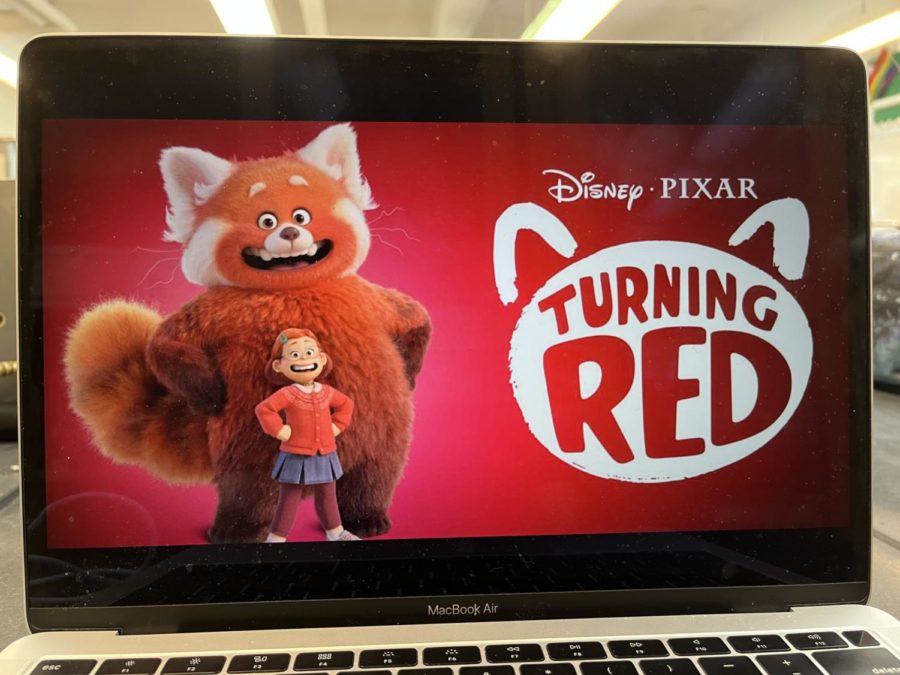The Significance of Pixar’s ‘Turning Red’
Pixar’s ‘Turning Red’ touches on the bittersweet experiences Asian-Americans face in their adolescence.
‘Turning Red’ is a coming-of-age movie that tells the story of thirteen year old Meilin Lee as she navigates adolescence and family expectations.
Hereditary curses, panda transformations, and generational trauma. Pixar’s Turning Red follows the story of thirteen year old Chinese Canadian teen Meilin “Mei” Lee struggling with her journey through puberty and adolescence. As she navigates the new challenges that come with being a teenager in an Asian household, Mei also has to deal with the fact that she magically transforms into a giant red panda whenever she experiences a strong emotion.
Ultimately, this movie is about more than puberty or growing pains — it is a movie that shines light on the Asian-American experience, especially when it comes to topics such as family dynamics and parental expectations, culture and traditions, and acceptance.
Turning Red is directed by Domee Shi, an award-winning Chinese Canadian animator, screenwriter, and director who has worked on many projects for Pixar, including Inside Out and Incredibles 2. Shi’s inspiration for the movie came from her own experiences growing up and navigating her own relationship with her mother. In an interview, Shi told HuffPost that she wanted to “make a movie for that 13-year-old Domee who was struggling with her body and her emotions and fighting with her mom every day and wanting to understand what was going on at that time, but in a fun and unique and magical way.” Her goal for the movie was to “show the specificity and nuance of the Asian parent-child relationship.”
Furthermore, when asked why Shi chose the red panda, she replied that its cute and funny features influenced her choice, but it was also because pandas do not have a deep mythological background. “I think we wanted the space and the room to come up with a whole legend and a mythology,” Shi said. “There’s something about the color, too…It represents being angry, being embarrassed or being very lustful for someone,” Shi told The New York Times.
In the movie, it is revealed that all the women in Mei’s family turn into red pandas every time they are overcome with anger or frustration, and the reason for this family curse is rooted in Mei’s ancestry. Her ancestors made a prayer to protect her family in times of need, and the panda transformation is a defense mechanism. The choice to use anger as the defining emotion is an interesting one as anger often holds negative connotations in Asian culture, especially when it comes to young women.
Throughout the movie, Mei struggles to control her emotions. At the same time, her family is ashamed and urges Mei to get rid of the panda transformation by undergoing a specific ritual. Mei’s friends, on the other hand, have an opposite reaction to her new look, offering her words of encouragement and acceptance. This stark difference in reactions brings to light the disconnect between Asian immigrant parents and their children when it comes to difficult situations and is a pressing theme throughout.
Many Chinese-Americans, specifically youth, have gone on to proclaim that the movie has made them feel seen and understood. Tabitha Yuen, a 14-year old film critic, wrote in a Teen Vogue article, that “With her giant red panda confidence, Mei is an inspiration for me.” Turning Red is a bittersweet movie that highlighted the Asian-American daughter experience, and to many, it was refreshing and heartwarming to see more representation in media.
To watch Turning Red on Disney+ (subscription required), click HERE.
In an interview, Shi told HuffPost that she wanted to “make a movie for that 13-year-old Domee who was struggling with her body and her emotions and fighting with her mom every day and wanting to understand what was going on at that time, but in a fun and unique and magical way.”
Wei Ni Zhang is a News Editor for the ‘The Science Survey.’ She finds journalistic writing to be most appealing given that it allows for different...











